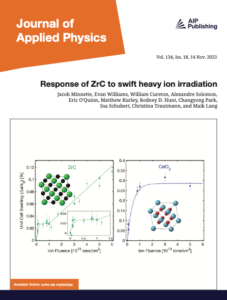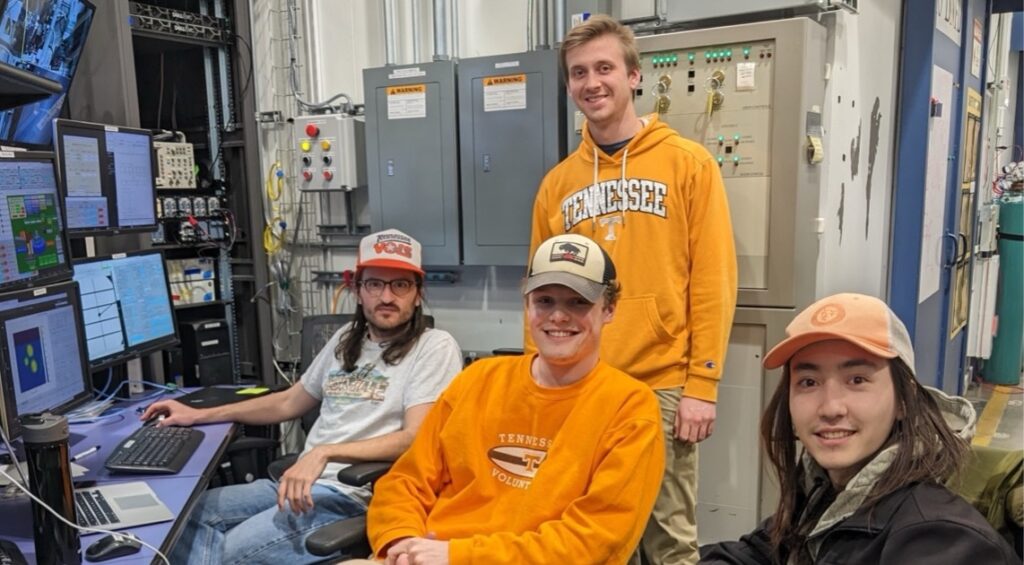Jacob Minnette, a third-year PhD student in nuclear engineering, has achieved a significant milestone in his academic career. His research, recently published in the prestigious Journal of Applied Physics, was selected as both a featured article and the cover figure for the November 14, 2023, edition (Volume 34, Issue 18). This marks Minnette’s debut as a lead author and a pivotal moment in his journey towards his dissertation.
More About Minnette
Originally from Newburgh, Ind., Minnette pursued his undergraduate studies at Purdue University, earning a bachelor’s degree in nuclear engineering in May 2021. His academic journey led him to UT, where he recently completed his master’s in the same discipline, defending a research project that laid the groundwork for this recent publication.
Minnette’s current research focuses on the study of nuclear fuel-form materials, particularly the synthesis and irradiation response of uranium-bearing fuel kernels. These components are crucial in the development of TRISO fuel, an advanced, accident-tolerant fuel form. The study, which is a part of a broader research agenda, aims to stimulate further investigation into the basic science underpinning nuclear fuel materials.
Collaboration Leads to Success

The research project benefits from collaborations across various institutions and countries, highlighting the importance of international cooperation in scientific advancements. The work involved the use of the Advanced Photon Source at Argonne National Laboratory and the GSI Helmholtz Center in Darmstadt, Germany, home to the world’s largest heavy ion accelerator. These collaborations, essential for the study of the effects of swift heavy ions on materials, have been a testament to the logistical expertise and teamwork fostered within the Disordered Materials (DISMAT) group at UT, led by Professor and Pietro F. Pasqua Fellow Maik Lang.
Lang, along with other notable collaborators such as Christina Trautmann, Ina Schubert, Changyong Park, Matthew Kurley, Rodney Hunt, William Cureton, Eric O’Quinn, and graduate students Alexandre Solomon and Evan Williams, played integral roles in the success of this project. Their collective efforts and expertise contributed significantly to the understanding of how carbide ceramics respond to transient energy depositions, a phenomenon crucial for applications in nuclear reactors and space environments.
Minnette acknowledges the support of the DOE/NNSA and the Chicago/DOE Alliance Center through cooperative agreement DE-NA0003975.
Contact
Adam Tseghaun, (tce@utk.edu)
